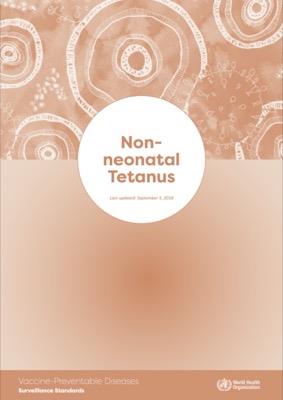Non-neonatal Tetanus: Vaccine Preventable Diseases Surveillance Standards

Overview
Globally, approximately 13,500 tetanus cases were
reported in 2016 through the WHO/UNICEF Joint
Reporting Form, with 85% of cases occurring after the
neonatal period (aged > 28 days), hereafter referred to as
non-neonatal tetanus or non-NT. This number is likely
an underestimate; true tetanus incidence is uncertain.
Tetanus is not transmitted from person to person.
Tetanus occurs when wounds or injured tissues (such
as from unclean deliveries, burns, surgeries, dental
or ear infections, or jigger/chigger infestations), are
contaminated with Clostridium tetani spores. In some
cases, the site of entry is unknown or no longer visible
when symptoms start.
The median incubation period
is seven days and usually ranges from 3 to 21 days.
Characteristic features of tetanus are trismus (lockjaw,
or inability to open the mouth), risus sardonicus (forced
grin and raised eyebrows), and opisthotonus (backward
arching of the spine). Generalized seizure-like spasms
occur frequently in response to stimuli. Autonomic
nervous system dysfunction (hypertension, abnormal
pulse) and spasm of respiratory muscles and larynx
can lead to respiratory failure. Among patients in the
youngest and oldest age groups, the case-fatality rate
approaches 100% without intensive care; with intensive
care, the rate can be reduced to 10%–20%.
